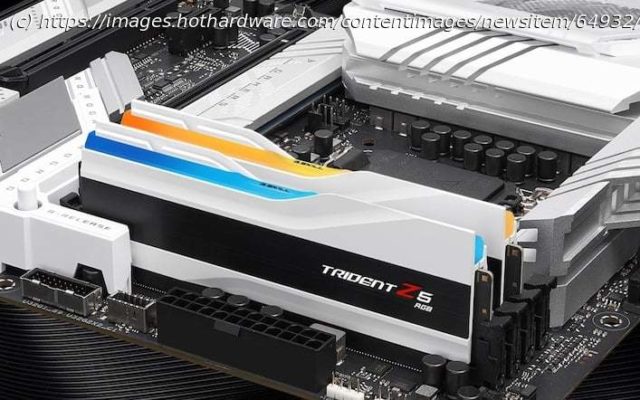What memory should you buy for Zen 5? Well, let’s dig into it and see if we can’t pull up some deals.
AMD’s all-new Zen 5 CPU core is going to debut with the launch of its “Strix Point” mobile processors in less than two weeks. However, those parts will largely be paired with soldered-down LPDDR5X memory thanks to the performance benefits it offers over socketed RAM. The desktop parts, branded as part of the “Ryzen 9000” family, are expected to follow at the end of the month.
So, let’s talk about application performance for a second. Most of the time, computer program performance will be held up on one or another part of the process. For tasks that are massively parallel, it will often be the CPU or GPU’s raw processing power. For apps that read and write from disk a lot (or on machines with hard drives), you could have an I/O bottleneck. Many applications, particularly games, don’t readily fall into one of those two categories, though. In that case, the most common speed limiter is memory performance.AMD shortcuts this situation with its 3D V-Cache processors that triple the L3 cache of their CPUs, effectively increasing memory performance by removing the need to go out to RAM so often. Zen 5 CPUs with 3D V-Cache won’t be out immediately, though; if you want one, you’ll probably be waiting another few months at least, and possibly until next year.
There’s also another factor to memory performance on AMD Ryzen, too: the speed of the Infinity Fabric that connects the CPU cores with each other and the systems’ I/O is linked to the memory controller clock. It’s possible to use a divider, or on some motherboards, uncouple it entirely, and the best option really depends on the components and use case in question, but generally speaking it’s preferable to keep everything running as close to 1:1 as possible.Basics Of Shopping For Computer Memory: DDR5 Edition
We could very literally write an entire dissertation on all of the different memory specifications that you can look at when buying RAM. If you’re reading this, though, you’re probably not looking for that kind of thing. Fundamentally, when picking memory for your PC, there are only a handful of specs that you need to pay attention to.
First and foremost is of course the memory type. For everything we’re discussing today, that’s going to be DDR5, but if you have an older PC, you’d better make sure what type you need, as none of them are compatible. There’s also some discussion to be had around ECC or non-ECC and “Registered” versus “Unregistered”, but that’s really outside the scope of this piece. Standard, non-ECC UDIMMs are what we want.
The next most important specification to consider is the capacity. How much RAM do you need? Well, how much do you want? More is not better, but too little is very bad. You can think of RAM like a bucket that holds water (your applications’ data.) If the bucket’s too big you probably wasted some money, but if the bucket’s too small, well, we have a problem. At this time we don’t really recommend anyone to build a new desktop PC with less than 32GB of memory. That’s primarily because current DDR5 systems have to sacrifice a lot of transfer speed when running more than 2 modules, so it’s better to get more than you think you’ll need for future-proofing, as an upgrade down the line may not be a sensible option.This slide is about Zen 3, but it’s mostly still applicable.
Finally, the last two specifications that you should really look at when buying RAM are the memory transfer rate and the CAS latency. The memory transfer rate is that big number you see in the specs; for DDR5 RAM, this is usually something like 4800, 5600, 6400, etc.






